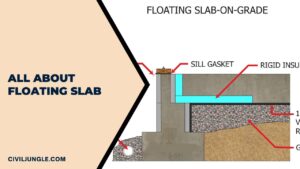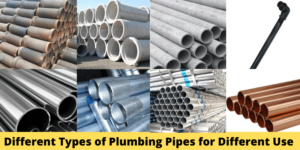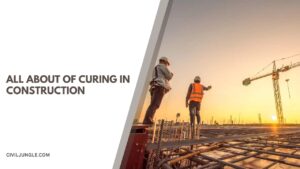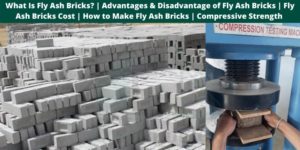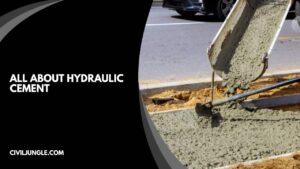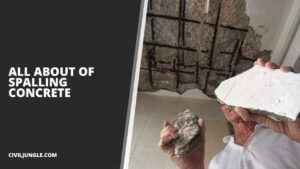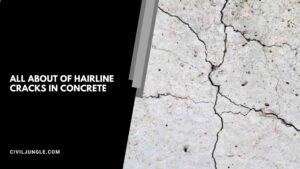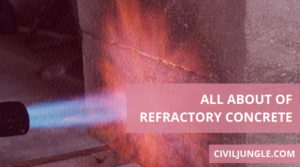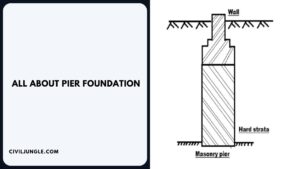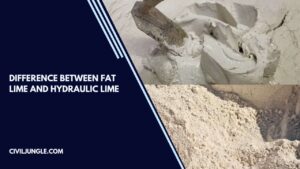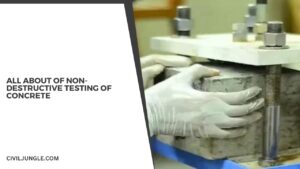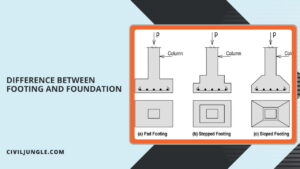What Is a Floating Slab? These slabs are constructed in two stages. At the first stage, the footings are poured separately. The centre floor of this floating slab is poured only after the footings are cured. The slab isn't … [Read more...]
20 Types of Plumbing Pipes for Different Use
Various types of plumbing pipes are used in building construction works for various purposes like water distribution, drainage, waste disposal made from different materials. In every construction, a sufficient quantity of water … [Read more...]
14 Types of Plaster Finishes (List of Plaster Finishing)
What is Plaster Finishes? Having your walls up is not the end of the building construction process. If you want to decorate your walls or cover their uneven surfaces, your contractors can finish your building with plaster. … [Read more...]
Abrasion Test | Test to Determine the Abrasion Value | Abrasion Test Principle | Important of Abrasion Test
Abrasion Test Measurement of toughness and resistance, often referred to as the abrasion test of aggregate, like degradation, crushing, and disintegration is the right definition of the Abrasion test. This abrasion test is … [Read more...]
Shotcrete Vs Gunite | What Is Gunite | Advantage & Disadvantage of Guniting Process | What Is Shotcrete | Advantage & Disadvantage of Shotcreting
Introduction of Shotcrete Vs Gunite Shotcreting, often referred to as gunite vs shotcrete, and Guniting are one of the most important and widely used techniques in construction. Many might wonder about the difference between … [Read more...]
Curing In Construction | Concrete Cure Time | Methods of curing
What Is Curing In Construction? Curing in civil engineering is the maintaining of adequate moisture content and temperature in concrete at an early age so that it could develop properties the mixture was designed to … [Read more...]
All About Fly Ash Bricks
What Is Fly Ash Bricks? Fly ash bricks are a building component in civil engineering; mostly, they are masonry material. Generally, class C and class F-fly ash, sand/stone dust and water is the ingredient of fly ash … [Read more...]
What Is Grouting | Types of Grouting | Advantage of Grouting | Types of Grout for Ceramic Tile
What Is Grouting? Grout is usually a mixture of cement, sand, and water or chemicals that are used to fill gaps, often referred to as grouting meaning in construction. They are used in repairing concrete cracks, filling seams … [Read more...]
What Is Hydraulic Cement | Hydraulic Cement Uses | How to Apply Hydraulic Cement | Advantages & Disadvantages of Hydraulic Cement
Introduction of Hydraulic Cement Water is the biggest enemy of the Civil Engineering Structures. Water can cause great damage to the structures. It is very necessary to protect the structures from moisture which can cause huge … [Read more...]
What Is Spalling Concrete | Causes of Spalling in Concrete | Repairing Concrete Spalding
What Is Spalling of Concrete? Spalling of concrete, also known as spalling concrete meaning, at fires is the breaking-off of layers of a concrete surface in response to applied heat. This phenomenon is also understood as … [Read more...]
Why Hairline Cracks in Concrete | Types of Cracks in Concrete
Why Hairline Cracks in Concrete ? Hairline Cracks in concrete are extremely common but often misunderstood. Once an owner sees a crack in his slab or wall, especially if the concrete is relatively new, he automatically assumes … [Read more...]
What Is Mass Concrete | Properties of Mass Concrete | Advantage of Mass Concrete | Disadvantage of Mass Concrete |How Much Mass Density of Concrete
Mass Concrete: Large bridge piers, foundations, and such as dams like the massive structure, the mass concreting technique is used. For also, mass concrete strength, economy, uniformity, and other factors considered should take … [Read more...]
What Is Refractory Concrete?
Introduction to Refractory Concrete: The Innovation in the construction material, including heat-resistant concrete, is increasing day by day. There are various types of concrete are manufactured for various purposes in the … [Read more...]
What Is Pier Foundation | Types of Drilled Piers | Advantages and Disadvantages of Drilled Pier Foundations
What Is Pier Foundation? A pier footing foundation, or simply a pier foundation, is a collection of large diameter cylindrical columns, sometimes referred to as piers construction or pier in construction, to support the … [Read more...]
Difference Between Fat Lime and Hydraulic Lime | What Is Fat Lime | What Is Hydraulic Lime
What Is Fat Lime? Fat lime is also called Rich lime, High calcium lime, Pure lime, White lime. It is obtained by calculating limestones. When water is added to this lime, it produces hissing sound, a lot of heat is … [Read more...]
Definition Efflorescence | Efflorescence in Concrete
How to Define Efflorescence? Effloresces, often referred to as the efflorescence meaning, is a crystalline set down of salts that can form when water is present in or on concrete, stone, brick, stucco, or other building … [Read more...]
Non-Destructive Testing of Concrete | Type of Non-Destructive Testing Concrete
What Is Non-Destructive Testing of Concrete? This test provides immediate results, strength, and real properties of the concrete structure. Non-destructive testing of concrete is a method to obtain the compressive strength and … [Read more...]
Difference Between Footing and Foundation | What is Footing and Foundation
What is Footing? Foundation Definition: The footing foundation is generally supporting columns and may be round, square, or rectangular at a plan and in section.and may be round, square, or rectangular at a plan and in … [Read more...]
- 1
- 2
- 3
- …
- 10
- Next Page »
